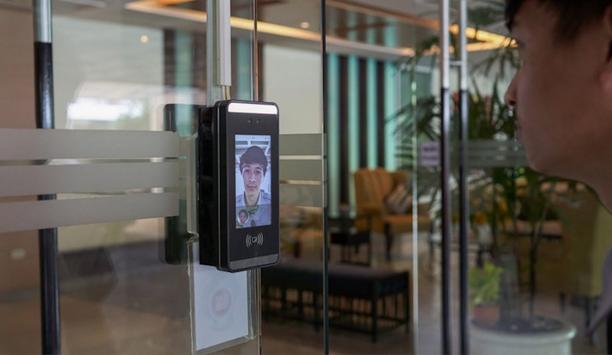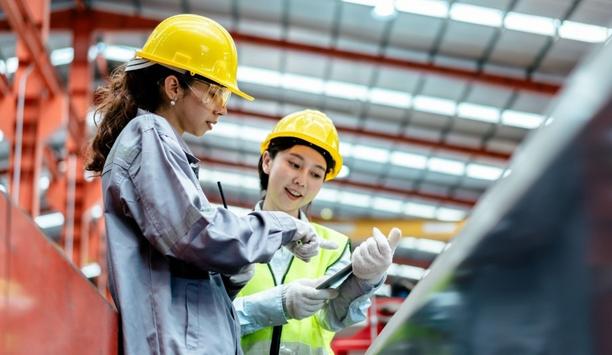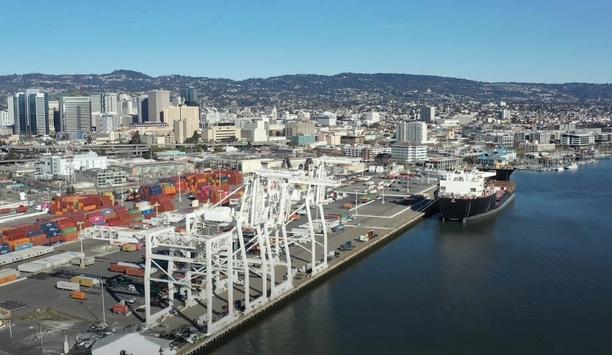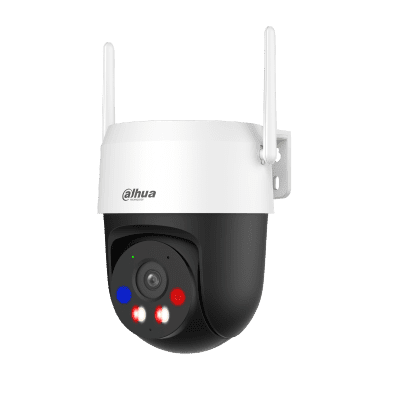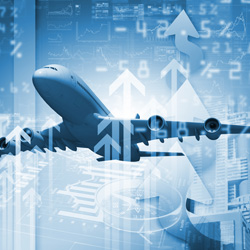 |
| The aviation and transportation industries are using video analytics to provide operational cost savings and performance enhancement |
Video analytics are now increasingly being used for the critical infrastructure, airports, transportation and city surveillance sectors, among other high-value markets. These markets need robust video analytics solutions that can be integrated into an overall security solution to deliver totally reliable results without any significant level of nuisance alerts. “We expect these markets to continue growing in hand with increasing advances in research and development for video analytics,” says Bill Flind, CEO, Ipsotek.
Aviation and transportation industries are good examples where video analytics provide additional benefits including operational cost savings and performance enhancement, Flind says. Security personnel who were previously required to physically man certain areas can now be freed up to enhance security elsewhere on a site. Transportation and city surveillance sectors benefit from improved safety, compliance and business intelligence through early detection of potential hazards as they develop, triggering alerts for action before incidents occur.
The market has been generally slow to adopt video analytics, says Flind. “We believe this is due to the historically disappointing results from many of the early technologies (that were over-promised and under-delivered),” he says. A good example is the many times when a “basic” system has been deployed onto what the customer had believed was a simple environment (e.g., perimeter fence of an airport or a power station), and then that system has become unusable because it generates hundreds (in some cases, thousands) of nuisance alarms each day. Flind adds: “The change that we are now seeing is that most potential customers now understand that a far more advanced technology will deliver an excellent solution into these environments – specifically, it is now widely understood that the power of a scenario-based solution like Ipsotek’s is required to deliver a robust solution even in these simple applications.”
“What we are seeing now in the marketplace is that video analytics is being specified, but specified in a discerning and intelligent way, where the client and the client’s trusted advisors have an appreciation of the difference in the capability of the different technologies,” Flind says.
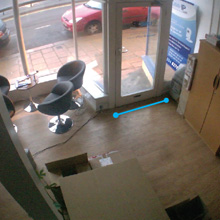 |
| 3VR’s VisionPoint VMS uses face, licence plate, advanced object tracking, loitering and demographics analytics to search for suspects |
Ipsotek delivers scenario-based video analytics across a wide range of applications in the commercial and public sectors. Deployments include perimeter protection, intrusion detection, investigation and forensics, and the management of traffic, crowds and operations. The patented scenario-based approach creates an exact description of the target behaviour, thereby giving dependable real alerts and dramatically reduced false alarms.
Ipsotek has received “i-LIDS Primary” accreditation by the UK Home Office, signifying it is “deployable as the sole system for perimeter protection for sterile zone intrusion.” This recognition of quality and reliable video analytics provides assurance that high-security sites and projects will be monitored to the utmost level of protection. Installations include Transport for London (TfL) traffic management, London Eye, the O2 Arena, Network Rail, the Australian Parliament, plus various international airports and other critical buildings and infrastructures around the world.
Meeting stringent customer requirements
Another video analytics provider, Agent Vi, is strong at the mid- to high-end of the market, where customer requirements are more stringent. Vertical markets include critical infrastructure and transportation hubs (including airports, seaports, train stations and railroad operations), the enterprise market, and retail. Agent Vi’s rules-based system includes some preconfigured types of objects the system can detect and behaviours it can analyse. The integrator can specify the analytics rules needed on a per-camera basis. For example, one camera might alert if a crowd forms and another might alert if a vehicle stops in the area. A user interface allows operators to set the rules, or they can rely on a systems integrator to set the system up.
In the enterprise market, applications might include perimeter security, or detecting people where they shouldn’t be, or detecting tailgating through access control points. Analytics can address safety issues, such as detecting if something is blocking an emergency exit or a vehicle is parked in a no-loading zone. “We provide a fairly extensive tool box, and a lot of times we don’t know the exact configuration or application,” says Zvika Ashani, chief technology officer (CTO), Agent Video Intelligence (Agent Vi). “It’s so versatile.”
Video analytics company iOmniscient is active is 30 vertical markets, including transportation (airports, railways, seaports), retail banking, hotels, casinos, the Secret Service, Defence Department, etc. The company is also active in Smart City applications, including Singapore and other locations in the Middle East and Asia. In the North American market, iOmniscient supplies the Chicago Transit Authority, the Mexico City airport, prisons in Vancouver, various oil and gas applications, universities, museums, etc. iOmniscient systems can operate centrally or at the edge, depending on the application. However, at the edge, the software is installed in a black box alongside the camera rather than in the camera because chips inside cameras do not have enough computing power. “When we say edge, we mean near the camera not in the camera,” says Dr. Rustom Kanga, CEO of iOmniscient.
Consider overall system costs
In assessing the costs of video analytics, the traditional practice of considering costs “per camera” is no longer relevant. Rather, the cost of the entire system should be considered, and also how it might be offset by cost savings achieved in other areas. Kanga contends one Smart City application was completed at zero incremental cost – the cost of the system was offset completely by a 70 to 80 percent reduction in storage, bandwidth and computing requirements. “The hardware is half the cost of the system, so if you can reduce it by 80 percent, the whole system can come in at zero incremental cost,” he says. “Our system is very cost-competitive.”
"If you don’t have video analytics, |
“If you don’t have video analytics, you are wasting your money putting in cameras,” says Kanga. “If you have 1,000 cameras in a large environment, no one will sit and watch them. They are only useful after the event. Video analytics enables systems to become a useful tool to prevent incidents and to allow a fast response. With video analysis, video becomes a tool that you can use in real time.”
Analytics are used to solve a specific problem, says Brian Lane, director of marketing, 3VR. For example, when there are bandwidth restraints, cameras can be set up to send only low-bandwidth video until the analytic detects a car or person. The analytic tells the camera to then send a high-resolution stream to the server for the duration of the event. This helps keep bandwidth and storage requirements low.
3VR’s Customer Insights business is used by retailers, banks, food service, hospitality and other markets to track customers and understand buying habits. Through an interactive dashboard, retailers and others can harness 3VR analytics to provide business intelligence they can use to help increase sales or improve operations.
3VR’s VisionPoint VMS loss prevention and security video management software (VMS) uses face, licence plate, advanced object tracking, loitering and demographics analytics to search for suspects.
The price of analytics is dropping, and many companies are lowering the barrier to entry by allowing customers to pay monthly or yearly, rather than all at once, says Lane. But, while implementing analytics has become easier, many integrators are not trained on how to set up and install analytics, leading to a frustrated customer. 3VR has specific tried-and-true methods for setting up cameras for analytics, and its integrators are trained on analytic implementation through online and on-site classes. 3VR provides the hardware for highly accurate people counting, and customers can pay for retail analytics monthly.
Proactive perimeter security
According to DVTEL, video analytics provide an ideal solution for proactive perimeter security in the critical infrastructure, transportation and commercial/industrial verticals, as well as general security for healthcare, gaming and other facilities. Going beyond the typical forensic video capabilities, analytics can help users catch criminals during a security event. The technology provides the best ratio of false alarm rates to probability of detection, as well as the most reliable and cost-effective solution for intrusion detection, when compared to legacy perimeter and fence sensors, typical surveillance devices and other video content analysis solutions.
DVTEL’s Site Viewer eliminates the need to use a Video Management System to monitor and control remote sites. This makes it suitable for remote sites that cannot install a PC (such as power utility installations, solar farms, cellular and communication facilities, and construction sites) and that have limited network bandwidth.
Today’s most effective security systems incorporate other sensors, including perimeter intrusion detection, alarms, remote video monitoring thermal imagery and video analytics, says Maor Mishkin, director, Video Analytics Product Champion, DVTEL. In today’s market, end users demand integrated systems that combine intelligent detection systems to specifically fit their business and risk profile, he adds.
By streamlining decision-making |
By streamlining decision-making and even automating some protocols, video analytics enable organisations to respond more quickly to events, using fewer personnel than would be required with traditional surveillance systems. In addition, ioimage video analytics enable more accurate detection and fewer false alarms by reliably differentiating between legitimate threats and other movement, such as tree branches blowing in the wind. Perhaps most compelling, video analytics has the potential to decrease storage costs for many users, since they are able to record at lower resolution until the system detects suspicious movement.
Tight integration at the edge
High-profile perimeter security breaches at critical sites have underscored the risks associated with physical security breaches and the potentially disastrous consequences. Now organizations – some as a result of pending regulations such as NERC CIP for utilities – are seeking reliable and cost-effective solutions using video analytics to detect intruders and send alarms about security incidents in real time.
SightLogix SightSensors are smart thermal cameras with embedded video analytics powered by a high degree of video processing. By tightly integrating the imager, analytics and video processing, SightSensors are able to deliver accurate detection in all weather, climates, and conditions.
Some verticals adopting video analytics for outdoor intrusion detection include electrical utilities, specifically substations; airports and other transportation organizations, such as bridges and rail applications; datacentres; and ports. These sites require protection and 24/7 detection for large, open areas that are difficult to patrol. Video analytics with thermal detection cameras combine detection with video verification in a single solution, allowing for a fast and precise response.
Beyond security, video analytics combined with outdoor thermal cameras opens up a new world of understanding, from early detection scenarios to looking at behaviour that increases operational efficiency.








